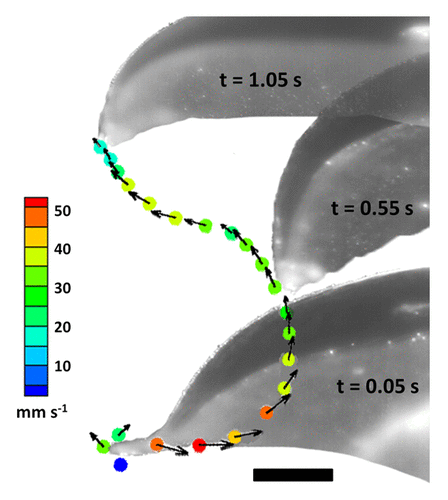Figures & data
Figure 1. Partial view of a 4 cm jellyfish (Aurelia aurtia) illustrating conformational changes of the bell margin (yellow) and resulting control/enhancement of vortex rings. (A) Early stage of contraction where substantial outward bending occurs and strength of the starting vortex (V2) increases and interacts with the previous swimming cycle’s stopping vortex (V3). The current cycle’s stopping vortex (V1) forms upstream of V2 but has low vorticity. (B) Near the end of the contraction cycle bending is reduced and the stopping vortex (V1) is now positioned near the bell margin. (C) The relaxation phase begins and the bell margin exhibits inward bending which coincides with enhancement of V1 and repositioning at the tip of the bell margin. (D-F) Expansion of the bell continues upwards and outwards as bending becomes reduced. This motion aids in positioning the vortex (V1) under the bell and increasing the vorticity.


